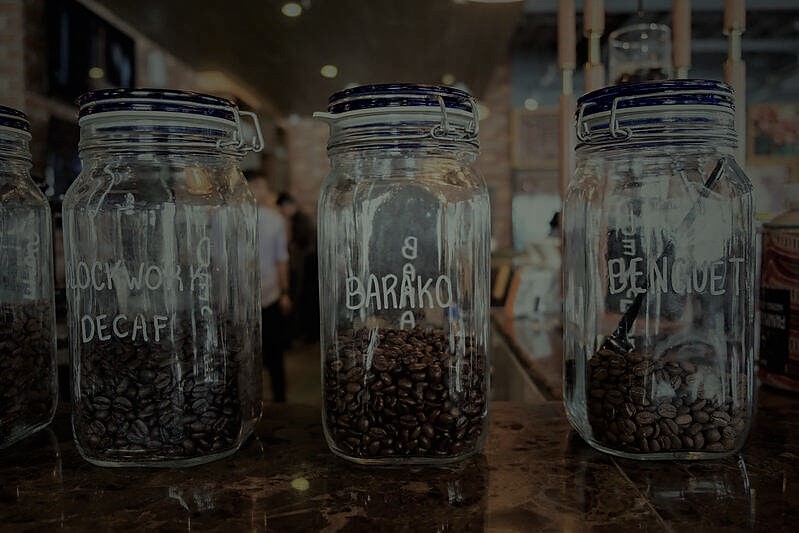Flavor
Flavor is a combined impression with taste and smell.
People prefer different types of flavors within coffee.
For example, fruity flavor within coffee is one of the highest sought after qualities in the best coffees and can be found in African coffees.
Aroma
Made up of both Fragrance (smell of dry ground coffee) + Aroma (smell of coffee in hot water)
A coffee's aroma is one of the main categories used by professional coffee tasters to judge the quality of a coffee.
Depending on the roast of the coffee, it can range anywhere from light and fruity to burnt. Most coffee will smell lightly caramelized and almost nutty. A stale coffee will smell musty and cardboard-like.
For example, a Yemen Mocha Mattari is known for its dark chocolate aroma. If this is something you're interested in, click here to buy it!
Aftertaste
The taste that remains in the mouth subsequent to swallowing a sip of brewed coffee.
Aftertaste is defined as the length of positive flavor (taste and aroma) qualities emanating from the back of the palate and remaining after the coffee is expectorated or swallowed. Aftertastes range from chocolaty to carbony, turpeny to spicy, possibly with hints of caramel, fruitiness, smokiness, roastiness, and other flavors.
Acidity
It contributes to a coffee's liveliness, sweetness, and fresh- fruit character and immediately experienced with the first sip.
The organic acids in coffee contain powerful antioxidant properties that contribute some of the health benefits to coffee, but there’s a trade-off for some people. (A coffee a day may NOT keep the doctor away) Just so you know, coffee with high acidity has nothing to do with amount of acid, or pH.
Fun Fact: Coffees expected to be high in Acidity, such as a Kenya coffee, or coffees expected to be low in Acidity, such as a Sumatra coffee, can receive equally high preference scores although their intensity rankings will be quite different.
Body
The physical mouth feel and texture of a coffee.
A coffee’s body may be described as light (or thin), medium, or full. A coffee with a full body will have a buttery or even syrupy quality. Fuller-bodied coffees also retain more of their flavor when they are diluted. Sumatra coffee, for example, are known to have a heavy body, while Yemen Mocha coffees tend to be either heavy or medium bodied. Mexican coffees generally have a lighter body.
Fun Fact: Coffees expected to be high in Body, such as a Sumatra coffee, or coffees expected to be low in Body, such as a Mexican coffee, can receive equally high preference scores although their intensity rankings will be quite different.
Balance
A well balanced coffee has flavors that can be sensed evenly across the tongue.
It is how the various aspects of Flavor, Aftertaste, Acidity and Body of the sample work together and complement or contrast to each other. A balanced coffee may be complex, but does not have any overwhelming flavor or aroma characteristics. Balance, however, is not necessarily a positive taste attribute, since some people prefer coffees with particularly strong flavor distinctions. This is totally a personal preference
Uniformity
Uniformity refers to consistency of flavor of the different cups of the sample tasted.
This is a rather new field of exploration and it’s not entirely clear whether more uniformity is more desirable in all cases. Having more ground beans would extract more flavor and aroma. But within this dataset, it is loosely tied to those attributes, since most coffee beans get a uniformity rating of 10.
Insight: It is interesting to note that Nicargua's coffee with the lowest Uniformity rating also has one of the lowest ratings overall in most of the other attributes. You can also click on the dot for this coffee and scroll up to watch the journey through different attributes!
Sweetness
It refers to a pleasing fullness of flavor as well as any obvious sweetness and its perception is the result of the presence of certain carbohydrates.
Generally, lighter roasts will have more of a fruity sweetness. Roasting a coffee to darker levels continues the caramelizing process, transforming the flavor to more of a caramelly, chocolatey sweetness.
Some African coffee beans are famous for their intense fruity sweetness, and elegant crispness that comes from growing at a very high elevation. For example, check this Ethiopia Yirgacheffe Espresso at Starbucks.
Insight: In this dataset - can you find the least 'sweet' coffee? Now take a look at what happens when you check this coffee bean's Total Cup points.
Clean cup
Non presence of flavor defect.
Clean Cup refers to a lack of interfering negative impressions from first ingestion to final aftertaste, a "transparency" of cup. Any non-coffee like tastes or aromas will disqualify an individual cup. Good coffee is flavorful, but without any pungent or unusual flavors.
Insight: How do the coffee beans with the lowest clean cup points compare when we get to the Total Cup points? Click on those lowest 2 scores on the left side and navigate down to Total Cup points...
Cupper points
This is meant to reflect the holistically integrated rating of the sample as perceived by the individual panelist.
A sample with many highly pleasant aspects, but not quite "measuring up" would receive a lower rating. An exemplary example of preferred characteristics not fully reflected in the individual score of the individual attributes might receive an even higher score.
Total cup points
The coffee with the highest total wins!
This basically adds up all the above aatributes and the grand total (out of 100) shows the best coffees, with the highest numbers corresponding to the best coffees.
Insight: In this case, Ethiopia has the highest rated coffees, and in this case, the one with the maximum total cup points. You can also click on the dot for the best Ethiopian coffee and scroll up to watch the journey through different attributes!
|
|
Sort countries by:
|
||||||||
|
|||||||||
